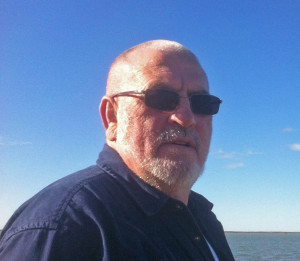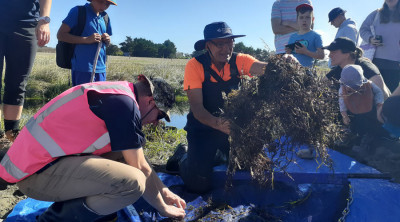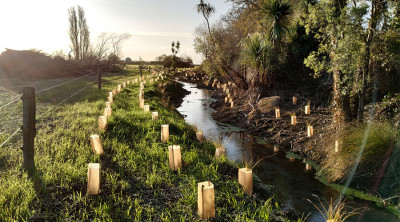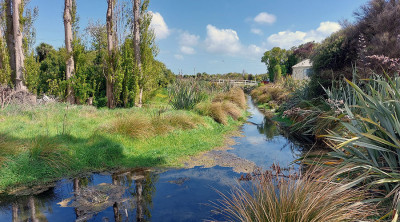Selwyn Waihora Water Zone Committee progress report
Each of Waitaha/Canterbury’s water zone committees has an action plan which outlines how they will work with the community to deliver their aspirations for freshwater as outlined in the Canterbury Water Management Strategy (CWMS). Committees report annually to let the CWMS partners and community know how things are tracking.
2022/23 Progress report
From the Chair

Les Wanhalla, Chair, Selwyn Waihora Water Zone Committee
Over the past year, we have seen a lot of changes in both the environmental space we work in and within our committee space. We welcomed Marie Pollisco who joined as our Christchurch City Council representative and Caine Tauwhare who joined as the rūnanga representative for Te Hapū o Ngāti Wheke (Rāpaki). The mātauranga/knowledge, skills and experience they bring to the Committee were welcome additions that complement our current membership.
Our Committee has received several presentations which have helped paint the picture of what is happening across our zone, the science which helps us understand freshwater processes, and the great mahi happening in our community. These all help develop our understanding of freshwater issues, connect the dots and projects, and understand what actions are needed to improve freshwater management.
The Committee has supported the Regional Policy Statement development currently underway. This mahi presents an opportunity for us all to shape the visions we want to see for freshwater in Waitaha/Canterbury and we welcome the challenges and opportunities this brings. We want to ensure communities can navigate and engage meaningfully with this process going forward.
We have seen some great mahi happening within our community which help deliver both our objectives set in our Action Plan, and outcomes for freshwater. A range of mahi is underway, from the Coes Ford constructed wetland project, to landowner restoration projects, to the Whakaora Te Waikēkēwai project. The Committee was proud to recommend several community projects for funding from the Committee’s Action Plan Budget which help restore our waterways and connect people with our awa. We are excited to see what opportunities the future presents and we will continue working with and supporting our community.
Key achievements 2022/23
- Supporting the Boat Creek Reserve Restoration Project for a second year. This included a field trip to see their aspirations for the reserve coming to fruition and how zone committee funding is being used to support local projects.
- Supporting Te Ara Kākāriki’s’ Green Dot Legacy Site, Ōkakaraiti, through the contribution of plants and funding a Kid’s Discovery Plantout Day allowing Lincoln Primary School to connect with their taiao/environment.
- Supporting Ellesmere Sustainable Agriculture Incorporated’s Project Tinaku including supporting the restoration of the Corbetts Road wetland. This is a great project which supports improving outcomes for freshwater on their members' properties.
- Increasing our understanding of mahi and research in the zone – including water quality projects, current research projects on the Waikirikiri/Selwyn River, participation in groups and forums such as the Coes Ford Constructed Wetland Project, Whakakōhanga Kōrero forum, and learning from various community group presentations.
Local projects helping to deliver on the CWMS targets
Read some of the stories about what is being done in the zone to deliver on the CWMS targets.
Working with key partners

Whakaweku, also known as koere or taruke, is a traditional mātauranga Māori trapping method that has been embraced by scientists as a monitoring tool.
Bioblitz at Muriwai o Whata was a joint effort between Environment Canterbury, Te Rūnanga o Ngāi Tahu, and Te Taumutu Rūnanga. The event was a chance for the community to learn about and connect with this special place of cultural significance.
An abundance of flora and fauna treasures were found at the Bioblitz, helping to create a snapshot of the area’s biodiversity and the event drew in over 100 members of the public.
The aim was to find and identify as many species as possible throughout the day. People used the iNaturalist app to upload photos and audio of their discoveries, creating an inventory of birds, plants, insects, lichen, fish, invertebrates and more. More than 1,100 observations (images and photos) were uploaded to the app, identifying more than 250 species. 200 of these species had never been recorded on iNaturalist NZ at the site before.
Bioblitz events provide a baseline for what lives in the environment, and helps build an understanding of what needs protecting.
This work helps meet these CWMS targets: Ecosystem health and biodiversity, Kaitiakitanga
Action Plan budget project

Planting to improve native biodiversity at Jollies Brook.
Project Tinaku is a flagship project of Ellesmere Sustainable Agriculture Incorporated that aims to protect and enhance the remnants of native biodiversity within the Ellesmere area. It also aims to improve water quality in the lowland waterways that feed into Te Waihora/Lake Ellesmere and Muriwai o Whata/Coopers Lagoon through multiple restoration projects.
It assists landowners with environmental enhancement, including riparian fencing and native plantings, willow control, mahinga kai, wetland and biodiversity restoration projects and sediment control measures.
This year the Committee recommended $10,000 for Project Tinaku to cover project management and coordination costs which have been vital to the success of the project.
This work helps meet these CWMS targets: Ecosystem health and biodiversity, Kaitiakitanga
Groundwork in the zone

Initial on-the-ground work has included planting days by tamariki – led by Te Ara Kākāriki Greenway Canterbury Trust and Enviroschools.
Te Waikēkēwai/Waikēkēwai Stream wetland project is a five-year project aimed at restoring mahinga kai values to this significant awa/stream in Selwyn.
The project is being led by mana whenua, Te Taumutu Rūnanga. Te Waikēkēwai/Waikēkēwai Stream signifies an important whakapapa/genealogical connection for the rūnanga, as it flows through Te Pā o Moki/the pā of Moki II, the son, to Orariki – the pā of Te Ruahikihiki, his father, who settled at Taumutu in the 17th century.
Te Waikēkēwai/Waikēkēwai Stream wetland project addresses three key issues including poor water quality in Te Waikēkēwai/Waikēkēwai Stream, the loss of mahinga kai and cultural values from the Te Waikēkēwai landscape, and the loss of aquatic and terrestrial biodiversity, resulting from degradation of the stream, wetland, and riparian habitats.
The project is co-partnered by Environment Canterbury and funded by Environment Canterbury and the Ministry for the Environment’s Freshwater Improvement Fund.
This work helps meet these CWMS targets: Ecosystem health and biodiversity, Kaitiakitanga
Delivering the community's vision for freshwater
The Canterbury Water Management Strategy (CWMS) puts some responsibility for finding solutions for freshwater management in the hands of the community, with support from councils, Ngāi Tahu, and others. The strategy sets out freshwater goals and targets to deliver the community’s vision for freshwater.
Each of the community-led water zone committees work collaboratively to develop freshwater recommendations to councils to help ensure plans give effect to these goals and targets.
Within each target area, there are several specific time-bound targets to be achieved and these are monitored and reported on to ensure progress is being made.
The CWMS targets are: Environmental limits, Ecosystem health and biodiversity, Natural character of braided rivers, Kaitiakitanga, Drinking water, Recreational and amenity opportunities, Water use efficiency, Irrigated land area, Energy security and efficiency and Indicators of regional and national economies.
Future challenges and opportunities – 2023/24
Going forward, the Committee is keen to work collaboratively with the community, catchment groups, and beyond to develop solutions that will meet both our changing needs and that of our taiao/environment.
The ongoing development of the Regional Policy Statement for Waitaha/Canterbury is an important piece that the Committee is keen to help our communities navigate and engage meaningfully with.
Changes within the environmental regulatory space present new targets and goals that require us to change the way we work and engage with our taiao/environment. With change comes opportunity, and zone committees are well-placed to support our community to navigate the challenges these changes present.
Find out more
- Learn more about the Selwyn Waihora Water Zone Committee.
- See the Selwyn Waihora Water Zone Committee Action Plan 2021-2024.
- Download the Selwyn Waihora Water Zone Implementation Programme (PDF file, 6.55MB).
- Download the Selwyn Waihora Water Zone Committee Implementation Programme addendum (PDF File, 6.55MB)
